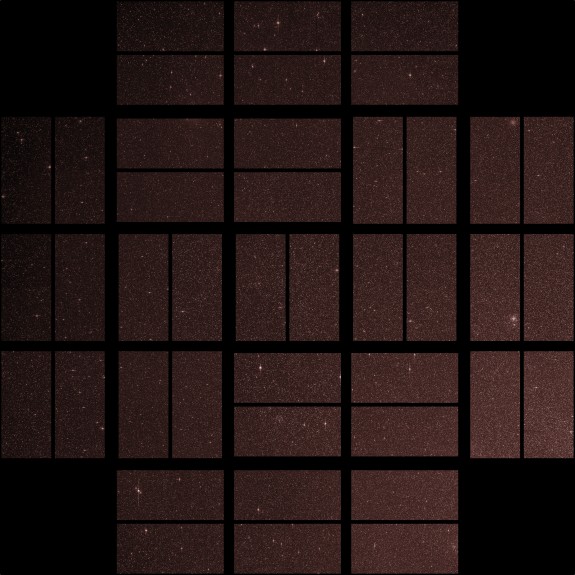So Long, Kepler: NASA’s Crack Exoplanet-Hunter Falls to Mechanical Failure
Kepler has changed our place in the universe, but now the four-year old satellite is down with a broken wheel

The Kepler satellite’s first photo, captured on April 8, 2009. Photo: NASA/Ames/JPL-Caltech
It’s been just over four years since NASA’s exoplanet-hunting Kepler satellite switched on and began staring unwaveringly at the same patch of the universe, watching for the subtle dips of light caused by a far-off planet passing in front of its star. Where the ancient Greeks knew of five planets besides our own Kepler gave us thousands. Extrapolations from this tiny patch of sky gave us hints of billions more.
Originally designed to run for three-and-a-half years, Kepler has pushed on. But the satellite’s quest may be at an end. Sad news came out from NASA yesterday that one of the satellite’s reaction wheels, a device that keeps Kepler’s eye steady, has failed. There may still be a way to fix the broken wheel or concoct some other strategy to keep Kepler shooting straight. But without a steady gaze the satellite can no longer carry out its mission.
In the science press, the obituaries are already rolling out. Though many scientific experiments teach us something new about the world, few have been able to so clearly redefine our place in the universe as Kepler. Decades ago, the planets in our solar system were all we knew. Now, we’re practically swimming in them.
Kepler may be down (but not “out”), but that doesn’t mean the discoveries will stop. It will take years to sort through and analyze all the data the mission has already collected. And, follow up research using other satellites on Kepler’s exoplanet “candidates” could still yet unveil the marvels of the universe.
More from Smithsonian.com:
You Can’t Throw a Rock in the Milky Way Without Hitting an Earth-Like Planet
17 Billion Earth-Size Planets! An Astronomer Reflects on the Possibility of Alien Life
What if All 2,299 Exoplanets Orbited One Star?
/https://tf-cmsv2-smithsonianmag-media.s3.amazonaws.com/accounts/headshot/smartnews-colin-schultz-240.jpg)
/https://tf-cmsv2-smithsonianmag-media.s3.amazonaws.com/accounts/headshot/smartnews-colin-schultz-240.jpg)